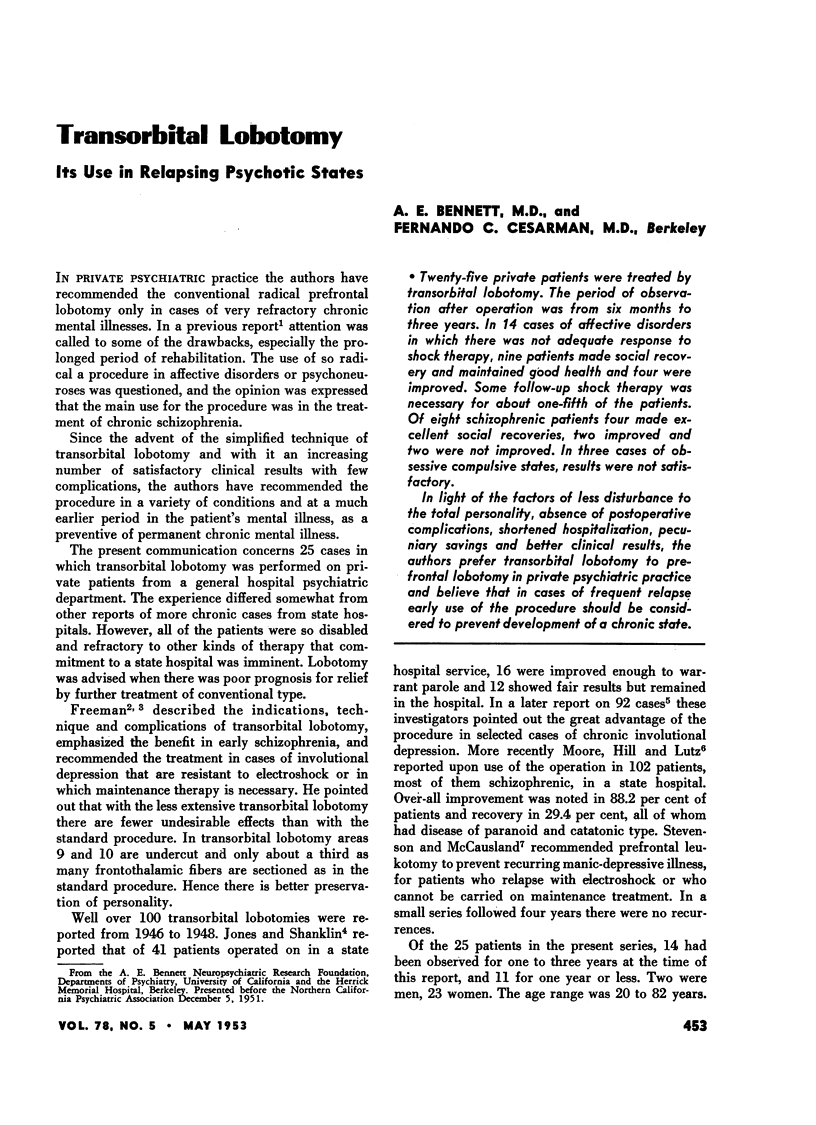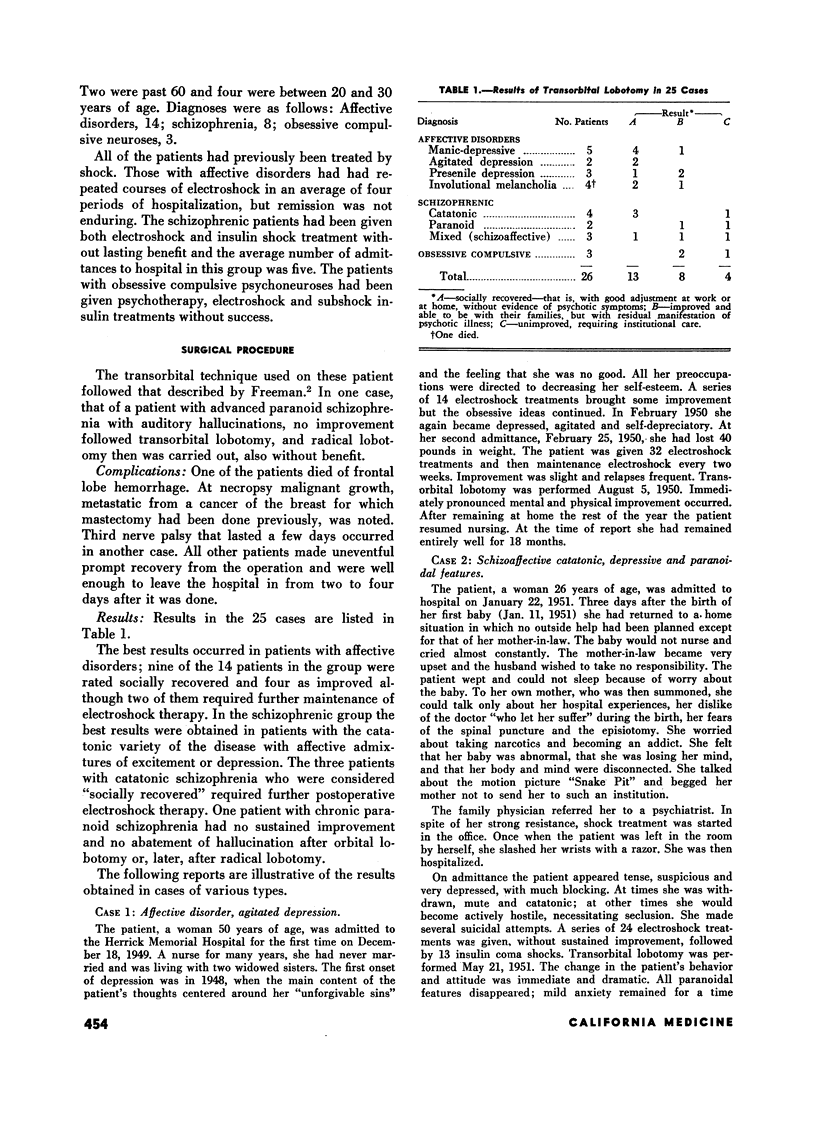Abstract
Twenty-five private patients were treated by transorbital lobotomy. The period of observation after operation was from six months to three years. In 14 cases of affective disorders in which there was not adequate response to shock therapy, nine patients made social recovery and maintained good health and four were improved. Some follow-up shock therapy was necessary for about one-fifth of the patients. Of eight schizophrenic patients four made excellent social recoveries, two improved and two were not improved. In three cases of obsessive compulsive states, results were not satisfactory.
In light of the factors of less disturbance to the total personality, absence of postoperative complications, shortened hospitalization, pecuniary savings and better clinical results, the authors prefer transorbital lobotomy to prefrontal lobotomy in private psychiatric practice and believe that in cases of frequent relapse early use of the procedure should be considered to prevent development of a chronic state.
Full text
PDF


Selected References
These references are in PubMed. This may not be the complete list of references from this article.
- JONES C. H., SHANKLIN J. G. Transorbital lobotomy in institutional practice. Am J Psychiatry. 1950 Aug;107(2):120–127. doi: 10.1176/ajp.107.2.120. [DOI] [PubMed] [Google Scholar]
- MOORE M. T., HILL R. L., LUTZ W. M. Transorbital leucotomy in a state hospital program. J Am Med Assoc. 1951 May 26;146(4):324–330. doi: 10.1001/jama.1951.03670040024005. [DOI] [PubMed] [Google Scholar]
- STEVENSON G. H., MCCAUSLAND A. Prefrontal leucotomy for the attempted prevention of recurring manic-depressive illnesses. Am J Psychiatry. 1953 Mar;109(9):662–669. doi: 10.1176/ajp.109.9.662. [DOI] [PubMed] [Google Scholar]


